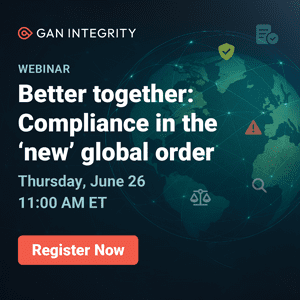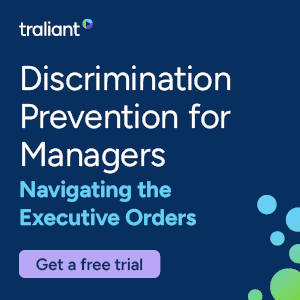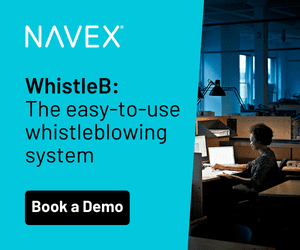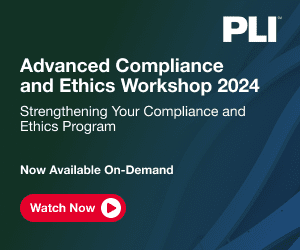The integration phase determines whether an acquisition creates lasting value or becomes a costly misstep. Protiviti’s Jim DeLoach shares essential questions boards and executives should ask after deal closure to ensure successful post-merger integration.
Last month, I discussed shifts in the due diligence process that are generating the need for more focused questions. Whether an acquisition is a standalone, complementary entity or an integration, the due diligence process is undergoing a paradigm shift due to the higher cost of funding and the impact of failed transactions on valuations. As a result, executive management and the board of directors should expect a more aggressive focus on due diligence.
The intent of last month’s article was to point out the most important, fundamental questions senior leaders and directors should ask during the due diligence process. It focused on the “primary asset” question: What are we actually buying? It summarized questions to ask during due diligence in the following areas:
- Supply chain resilience
- Talent pipeline and retention
- ESG
- Cybersecurity and data privacy
- Compliance with laws and regulations
- Integration effectiveness
The due diligence process focuses on identifying risks, confirming financial information and relevant facts, verifying critical deal points underpinning an investment opportunity, reviewing existing contracts and establishing a roadmap to address a transaction’s core issues via integration or separation planning. However, there also are important questions and activities to address after the deal is closed. The post-acquisition agenda includes such considerations as how the merger or acquisition is communicated to key external and internal stakeholders, execution of the integration or separation plan and keeping that plan on track, realization of planned synergies, evolution of the culture and appropriate reporting to senior leaders and the board.
Today, I want to focus on key questions related to the six areas listed above, as introduced last month, to help business leaders continue their engagement with these areas once the deal is consummated. These questions present opportunities for post-acquisition follow-up.
Supply chain resilience
The post-closing focus on the supply chain depends on whether the acquired company is being integrated into the acquirer’s operations or will be autonomous. If the plan is to integrate, it should call for an assessment of supplier relationships to identify those suppliers that are truly strategic to the combined business and the opportunities for renegotiating terms and consolidating suppliers to improve cost, quality and delivery performance. Steps should also be taken to ensure that the supply chain of the acquired company conforms to relevant industry standards, legal and regulatory requirements, and internal compliance and quality control measures consistent with the acquirer’s product standards and brand promise.
Whether the plan is to integrate the acquired company or operate it separately, the questions below should be considered:
- What are the worst-case scenarios pertaining to the acquiree’s supply chain and third-party dependencies? Are documented response plans in place and periodically evaluated with responsible leaders accountable to act should any of these scenarios transpire? Are there actions we should take to enhance our resilience in the face of potential supply chain disruptions?
- Should we conduct a comprehensive audit of the acquired company’s supply chain to identify potential risks, inefficiencies and areas for improvement and ensure that relevant industry standards and legal, regulatory and internal policies are being met, building on what was learned during pre-acquisition due diligence?
- Should we evaluate the acquiree’s inventory levels to reduce excess inventory, improve turnover rates and implement just-in-time practices (if appropriate)?
When Money Isn’t Cheap, M&A Due Diligence Must Go Deeper
Today's dealmakers must scrutinize targets through multiple lenses to avoid costly post-acquisition surprises
Read moreDetailsTalent pipeline and retention
As noted last month, talent retention can make or break a deal. Accordingly, pre-acquisition due diligence focuses on identifying top performers and initiating efforts to retain talent during due diligence rather than waiting until after the deal is consummated. The post-acquisition focus builds on these efforts. Questions to ask include:
- What are the most important aspects of the acquired operations and who are the leaders — both front-office and back-office — supporting them?
- Which specific actions do we undertake to retain these leaders, including the “hidden players” that truly make the organization valuable?
- What should we do to prepare should any of the key leaders or hidden players leave despite our efforts to retain them? To what extent are we investing in cross-training and development opportunities to align skills and knowledge in the acquired company with the new business objectives?
ESG
Following are relevant post-acquisition questions:
- What else do we need to do to evaluate the acquiree’s ESG practices to establish a baseline understanding?
- Based on our evaluation, are the acquired entity’s ESG strategy, core values, risk profile and growth opportunities compatible with ours? If not, what adjustments do we need to make to achieve alignment?
- How will the acquired entity’s ESG strategy and initiatives impact our external ESG reporting and the post-acquisition narrative we intend to share with the street? How will the acquisition impact the manner in which we engage key stakeholders?
- Have we integrated ESG factors into our enterprise risk management framework to ensure that we are capitalizing on opportunities related to sustainability and mitigating identified risks?
Cybersecurity and data privacy
One of the most critical cybersecurity considerations is the question around how the acquirer is integrating the acquired environment. To that end, does the acquirer’s security group have adequate input, involvement, visibility and escalation authority during the post-merger integration process? Given that, following are some key questions:
- In integrating the technologies between the two environments, are we ensuring that we have addressed security risks before we plug in the acquired systems to prevent potential contamination? If not, are there any stopgap steps we should perform to secure the acquired environment before we begin the transition/integration process? Otherwise, is it possible our approach will create any gaps in coverage from a security perspective?
- Did the acquiree underinvest in cybersecurity prior to the acquisition? If so, in what areas, and how does that impact our integration approach?
- Given the above, how are we addressing the risk that active threats remain in the acquired environment? Have we performed threat-hunting exercises? Do we need to implement remediation plans to shore up security?
Last month, I suggested that pre-acquisition due diligence focus on understanding the target’s policy for collecting, processing, storing, using, sharing, archiving, monetizing and destroying personal data and its compliance with applicable data privacy laws and regulations in all jurisdictions in which it operates. Post-acquisition, the following questions are relevant:
- Are the acquired entity’s data management policies and processes sufficient to ensure ongoing compliance with applicable data privacy laws and regulations? How do we know?
- Is the acquired entity’s data governance and management program compatible with ours?
- Is there a clear view as to why the acquired entity obtains and retains the data used in its business? Is it limiting data collection and retention only to the specific data points needed to drive its strategy and business model while ensuring compliance with applicable privacy laws and regulations in all the jurisdictions in which it operates?
Compliance with laws and regulations
Consider the following questions:
- Have we aligned the acquired entity’s compliance policies with ours?
- What training and reinforcement are needed to inculcate our compliance culture into the acquired organization, e.g., ethical behavior and code of conduct, anti-corruption policies, data management and governance policies and third-party risk management?
- Does the acquired entity have any pending significant control deficiencies and new regulatory requirements that require immediate attention?
- How are we ensuring compliance with all applicable laws and regulations post-acquisition?
Integration effectiveness
As for integration effectiveness post-acquisition, a key priority is empowering a cross-functional leadership “tiger team” to review and resolve inevitable integration problems that arise from Day One following deal consummation. This team is in place to quickly address issues with actionable solutions.
Following are some first-things-first questions for directors to kick off the post-acquisition conversation regarding integration effectiveness:
- Have we updated our due diligence evaluation of the acquired entity’s processes, inputs and outputs for each critical functional area that is expected to continue post-acquisition? (Process maps and narratives and discussions with key internal stakeholders who own critical processes and systems and/or are responsible for people and critical assets can facilitate evaluation of the fit and focus of the integration plan and cross-training efforts to enhance process maturity and build bench strength.)
- Do the individuals supporting the newly acquired operation understand our company’s goals and objectives? Are our post-acquisition communications and messaging sufficiently focused on retaining valuable employees, emphasizing company goals and objectives, addressing concerns, managing expectations and ensuring a unified approach?
- Are we confident that the members of our integration team have the bandwidth to fulfill their respective tasks? Are they free of competing responsibilities? If not, should we procure external support to achieve our integration objectives?
- How are we measuring the transaction’s success? What integration KPIs are we using? Is a dashboard periodically reviewed by management and the board to monitor progress, depending on the significance of the deal to the overall company, and identify areas for improvement? Are applicable timelines, milestones and critical due diligence follow-up priorities defined and tracked? (An organization cannot properly manage the integration process without metrics to track progress.)
- Have we established actionable plans to address the top concerns and risks identified during due diligence to both manage risk and achieve maximum efficiency?
- In integrating systems and standardizing processes, are we considering and adopting best practices from each entity? Do the board and executive management have visibility into the extent and nature of the acquired entity’s technical debt? Does integrating the acquired systems and infrastructure into our environment increase our technical debt? Is there active governance in place to ensure that effective tradeoff decisions are made, and is there an actionable roadmap to modernize systems and infrastructure and mitigate the risk and cost of technical debt?
By taking these steps, management can ensure that the acquisition contributes positively to the success and growth of the organization.
Acquisitions are challenging and stressful in the best of circumstances. The questions during due diligence provided last month and above, asked once the deal is consummated, provide executive management and the board a framework for engaging in strategic pre- and post-deal conversations in the C-suite and the boardroom regarding important risk areas.




 Jim DeLoach, a founding
Jim DeLoach, a founding 








